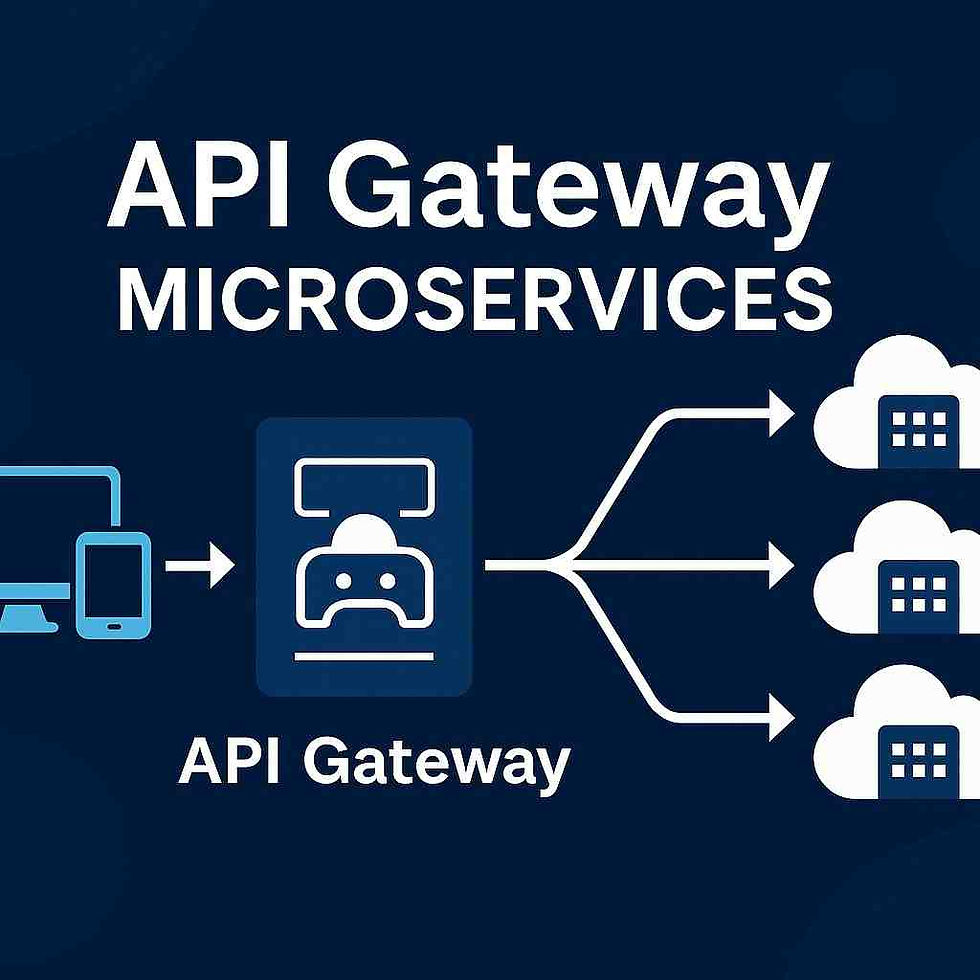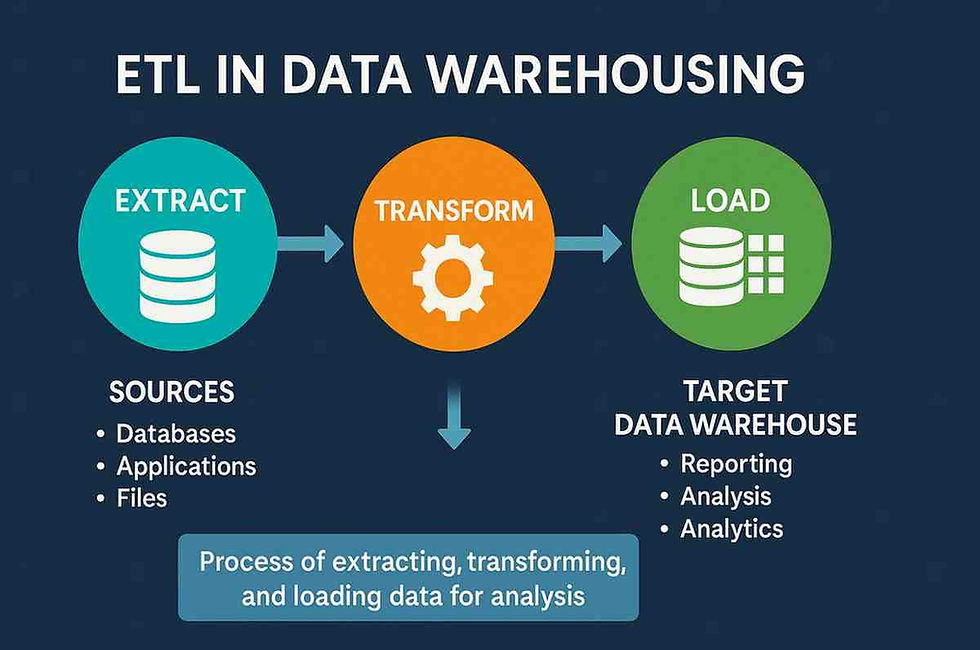REST APIs vs Web Services: Guide to Modern Application Integration
- Gunashree RS
- May 7
- 7 min read
In today's interconnected digital ecosystem, "REST API" and "Web Service" frequently appear in technical discussions, often used interchangeably despite their distinct characteristics. This comprehensive guide will delve into these fundamental technologies that form the backbone of modern application communication, clarifying their differences, similarities, implementation strategies, and real-world applications.
What Are Web Services? Understanding the Foundation
Web services represent a standardized method of machine-to-machine communication over networks, most commonly the Internet. They enable different applications, potentially built on diverse platforms and programming languages, to interact and exchange data seamlessly.
A web service functions as a software system designed to support interoperable machine-to-machine interaction over a network through standardized protocols. These services can operate across organizational boundaries, connecting disparate systems that would otherwise remain isolated silos of functionality.

Key characteristics of web services include:
Platform Independence: Web services operate independently of the underlying platform or programming language
Standardized Communication: They rely on widely adopted protocols like HTTP, XML, SOAP, or JSON
Self-Describing: Through standards like WSDL (Web Services Description Language), they provide detailed descriptions of their interfaces
Discoverable: They can be located through directories or registries using standards like UDDI (Universal Description, Discovery, and Integration)
Modular Architecture: Web services promote reusable components and functionality
Web services have evolved significantly over time, from early XML-RPC implementations to complex SOAP architectures and the more streamlined REST approach that dominates today's landscape.
REST APIs Explained: The Modern Approach to Web Services
REST (Representational State Transfer) APIs represent a specific architectural style of web services that has become the dominant approach for modern web development. REST provides a simpler, more lightweight alternative to earlier web service implementations.
REST was formally introduced by Roy Fielding in his 2000 doctoral dissertation and has since revolutionized how applications communicate over the internet. Unlike earlier web service protocols that relied heavily on complex specifications, REST embraces the fundamental principles of the web itself.
Core Principles of REST Architecture
REST APIs adhere to several key architectural constraints:
Client-Server Architecture: Separation of concerns between the user interface (client) and data storage (server)
Statelessness: Each request from client to server must contain all information needed to understand and complete the request
Cacheability: Responses must explicitly indicate whether they can be cached
Layered System: The Client cannot ordinarily tell whether it's connected directly to the end server or an intermediary
Uniform Interface: All resources are accessed through a standard interface using HTTP methods
Code on Demand (optional): Servers can temporarily extend client functionality by transferring executable code
HTTP Methods in REST APIs
REST APIs leverage standard HTTP methods to perform operations on resources:
This alignment with HTTP methods creates an intuitive, predictable interface that developers can quickly understand and implement.
REST APIs vs. Traditional Web Services: Key Differences
While REST APIs are technically a type of web service, they differ significantly from traditional web service implementations like SOAP. Understanding these differences can help developers choose the right approach for their specific requirements.
Architectural Philosophy
Traditional web services, particularly SOAP, tend to focus on operation-centric design. They define a set of operations (methods) that clients can invoke, often resembling remote procedure calls. In contrast, REST APIs adopt a resource-centric approach, where operations are performed on resources identified by URLs using standard HTTP methods.
Data Format Flexibility
Traditional Web Services:
Primarily XML-based
Require strict adherence to schemas
Involve complex type systems
REST APIs:
Format agnostic, though JSON is most common
Lightweight data exchange
Simpler to parse and generate
Protocol Usage
Traditional web services often employ complex protocol stacks with extensive standards and specifications. SOAP, for instance, can operate over various transport protocols but introduces additional complexity through its envelope structure, addressing specifications, and other mechanisms.
REST APIs, meanwhile, fully embrace HTTP as their application protocol, using its native features for authentication, caching, content negotiation, and more. This simplicity makes REST APIs particularly well-suited for web-based scenarios and public-facing interfaces.
Implementing REST APIs: Best Practices
Creating effective REST APIs involves adhering to established best practices that ensure scalability, maintainability, and ease of consumption:
Resource Naming Conventions
Use clear, meaningful, and hierarchical resource names:
Use nouns for resources: /articles instead of /getArticles
Use plural forms for collections: /users rather than /user
Express relationships in URLs: /users/123/posts to identify posts by user 123
Keep URLs simple and readable: Avoid deep nesting beyond 2-3 levels
Status Code Usage
Properly implement HTTP status codes to indicate request outcomes:
2xx codes: Successful operations (200 OK, 201 Created, 204 No Content)
3xx codes: Redirection (301 Moved Permanently, 304 Not Modified)
4xx codes: Client errors (400 Bad Request, 401 Unauthorized, 404 Not Found)
5xx codes: Server errors (500 Internal Server Error, 503 Service Unavailable)
Versioning Strategies
Include versioning mechanisms to support API evolution:
URL path versioning: /api/v1/resources
Query parameter versioning: /api/resources?version=1
Custom header versioning: Accept-version: v1
Content negotiation: Accept: application/vnd.company.v1+json
Web Service Standards and Protocols
Web services encompass various standards and protocols beyond REST. Understanding these alternatives provides context for why REST has become so prevalent while recognizing scenarios where other approaches might be more appropriate.
SOAP (Simple Object Access Protocol)
SOAP represents a protocol specification for exchanging structured information in web services. Its key characteristics include:
XML-based messaging format
Built-in error handling through fault elements
Extensibility through SOAP modules
Platform and language independence
Strong typing and validation through WSDL
SOAP excels in enterprise environments with complex requirements for security, reliability, and transactions. It remains common in financial services, healthcare, and other industries with strict compliance needs.
GraphQL: A Modern Alternative
Developed by Facebook and released as open-source in 2015, GraphQL offers an alternative approach with distinct advantages:
Client-specified data retrieval (clients request exactly what they need)
Single endpoint for all operations
Strong typing system
Introspective capabilities
Reduced network overhead by eliminating over-fetching
GraphQL has gained significant adoption for applications with complex data requirements, particularly those involving mobile clients where bandwidth efficiency is crucial.
Security Considerations for REST APIs and Web Services
Security represents a critical aspect of any web service implementation. Different approaches offer varying security mechanisms:
REST API Security
REST APIs typically implement security through:
Transport Layer Security (TLS/SSL): Encrypting communications
Authentication mechanisms:
Basic Authentication
API keys
OAuth 2.0 and OpenID Connect
JSON Web Tokens (JWT)
Rate limiting: Preventing abuse through request throttling
Input validation: Protecting against injection attacks
SOAP Security Extensions
SOAP provides extensive security capabilities through WS-Security standards:
Message-level encryption
Digital signatures
Security token integration
Federated identity support
Adherence to enterprise security policies
This comprehensive security framework makes SOAP suitable for scenarios with stringent security requirements, though at the cost of increased complexity.
Real-World Applications: REST APIs vs. Web Services
Different industries leverage these technologies in distinct ways:
E-commerce Integration
Modern e-commerce platforms extensively use REST APIs for:
Product catalog management
Order processing
Payment gateway integration
Shipping provider coordination
Traditional web services often power backend integration with enterprise systems like ERP and inventory management.
Healthcare Systems
Healthcare applications frequently employ both approaches:
REST APIs for patient-facing mobile applications and portals
SOAP web services for exchanging sensitive clinical data with legacy systems
HL7 FHIR (built on REST principles) for modern healthcare data exchange
Financial Services
The financial sector utilizes:
REST APIs for consumer-facing banking applications
SOAP for core banking system integration
Hybrid approaches for payment processing networks
Conclusion: Choosing the Right Approach
The choice between REST APIs and traditional web services should be guided by specific project requirements:
REST APIs excel when:
Building public-facing services
Prioritizing developer experience and adoption
Creating mobile backend services
Emphasizing simplicity and performance
Traditional web services (like SOAP) remain valuable when:
Enterprise integration is the primary goal
Formal contracts between systems are required
Complex security requirements exist
Transactional integrity across operations is essential
The modern approach often involves the strategic use of both methodologies, with REST APIs serving as the primary external interface while leveraging established web service protocols for critical internal systems integration.
Key Takeaways
REST APIs represent a specific architectural style within the broader category of web services
REST emphasizes statelessness, resource orientation, and HTTP method semantics
Traditional web services like SOAP focus on operation-centric design with strong typing
REST APIs typically use JSON and provide a simpler implementation
Web services support multiple protocols and often rely on XML
Security approaches differ significantly between REST and traditional web services
The choice between approaches should be guided by specific use cases and requirements
Modern systems often combine both approaches strategically
FAQ
What is the main difference between REST APIs and web services?
REST APIs represent a specific architectural style of web services that emphasizes statelessness, resource orientation, and standard HTTP methods. While all REST APIs are web services, not all web services follow REST principles. Traditional web services like SOAP often use complex protocols and focus on operation-centric designs.
When should I use SOAP instead of REST?
SOAP is preferable when you need enterprise-grade security, formal contracts between systems, reliable messaging with guaranteed delivery, or complex transactions. Industries with strict compliance requirements, like healthcare and finance, often continue using SOAP for critical systems.
Can REST APIs and traditional web services work together?
Yes, many organizations implement hybrid architectures where REST APIs serve as external interfaces while traditional web services handle internal system integration. API gateways often facilitate this integration by translating between different protocols.
Are REST APIs faster than SOAP web services?
Generally, REST APIs have better performance due to their lightweight nature, lack of extensive XML processing, and effective use of HTTP caching. However, specific implementations and network conditions can influence actual performance.
How do REST APIs handle state if they're supposed to be stateless?
REST APIs maintain statelessness by ensuring each request contains all information needed for processing. They manage session state through tokens (like JWTs) passed with each request rather than storing session information server-side.
What are the security challenges specific to REST APIs?
REST APIs face challenges including authentication across distributed systems, securing tokens, preventing cross-site request forgery, handling cross-origin resource sharing securely, and ensuring proper authorization at the resource level.
How does API versioning work in REST vs. traditional web services?
REST APIs typically version through URL paths, headers, or content negotiation, while traditional web services often use namespaces within their WSDL definitions or separate endpoint URLs for different versions.
What are microservices, and how do they relate to REST APIs?
Microservices are an architectural style where applications are composed of loosely coupled services. They commonly expose functionality through REST APIs, though they can use other communication protocols like gRPC for internal service-to-service communication.
Sources
Richardson, L., & Ruby, S. (2007). "RESTful Web Services." O'Reilly Media.
Erl, T. (2005). "Service-Oriented Architecture: Concepts, Technology, and Design." Prentice Hall.
Masse, M. (2011). "REST API Design Rulebook." O'Reilly Media.
Webber, J., Parastatidis, S., & Robinson, I. (2010). "REST in Practice." O'Reilly Media.
Allamaraju, S. (2010). "RESTful Web Services Cookbook." O'Reilly Media.
W3C. (2007). "SOAP Version 1.2 Part 0: Primer (Second Edition)." W3C Recommendation.
OASIS. (2006). "Web Services Security: SOAP Message Security 1.1." OASIS Standard.




Link INDOVIP138
indovip138
indovip138
indovip138
indovip138
indovip138
indovip138
indovip138
indovip138
indovip138
indovip138
indovip138
indovip138
indovip138
indovip138
indovip138
indovip138
indovip138
indovip138
indovip138
indovip138
indovip138
indovip138
indovip138
indovip138
indovip138
indovip138
indovip138
indovip138
indovip138
indovip138
indovip138
indovip138